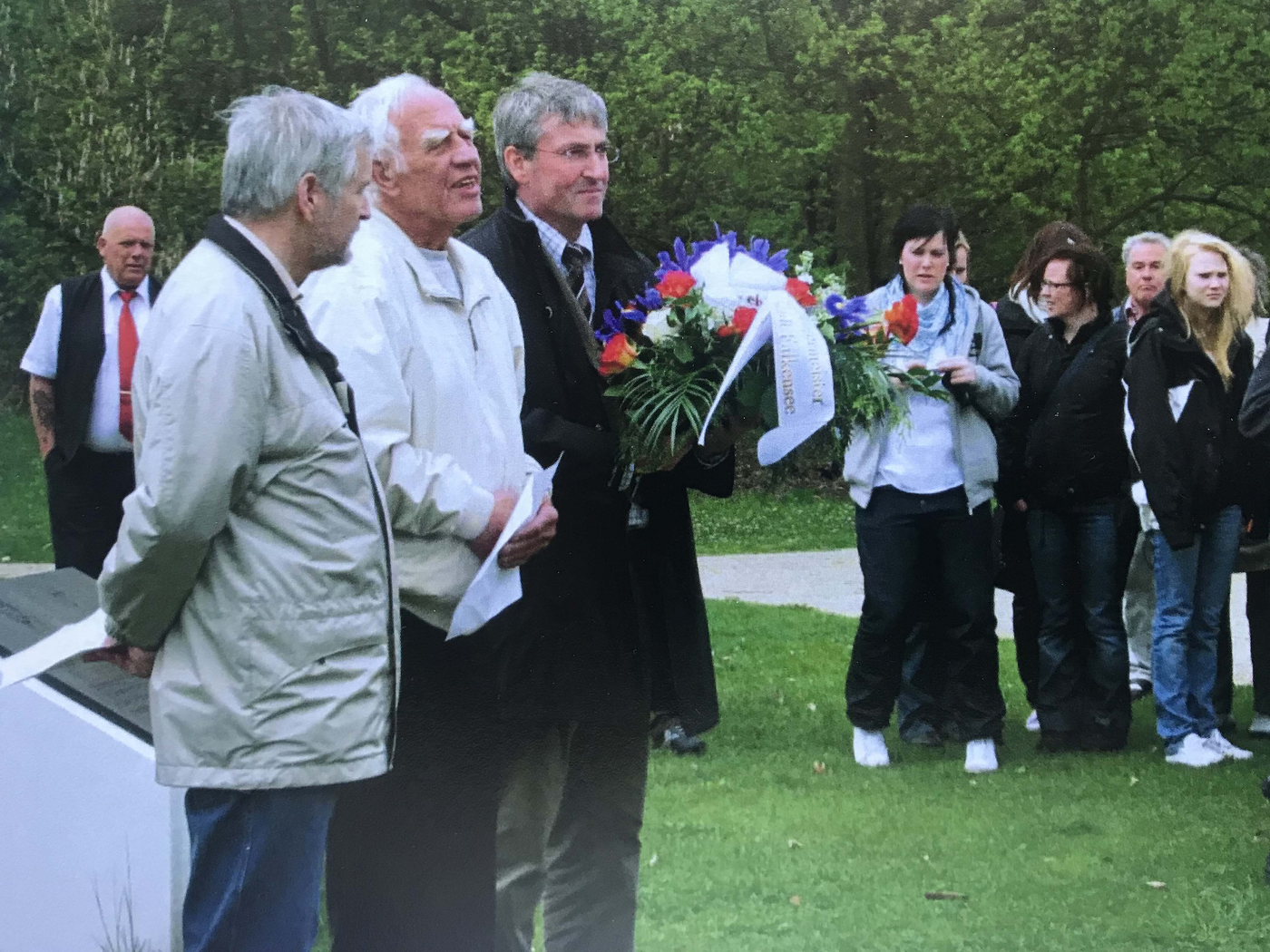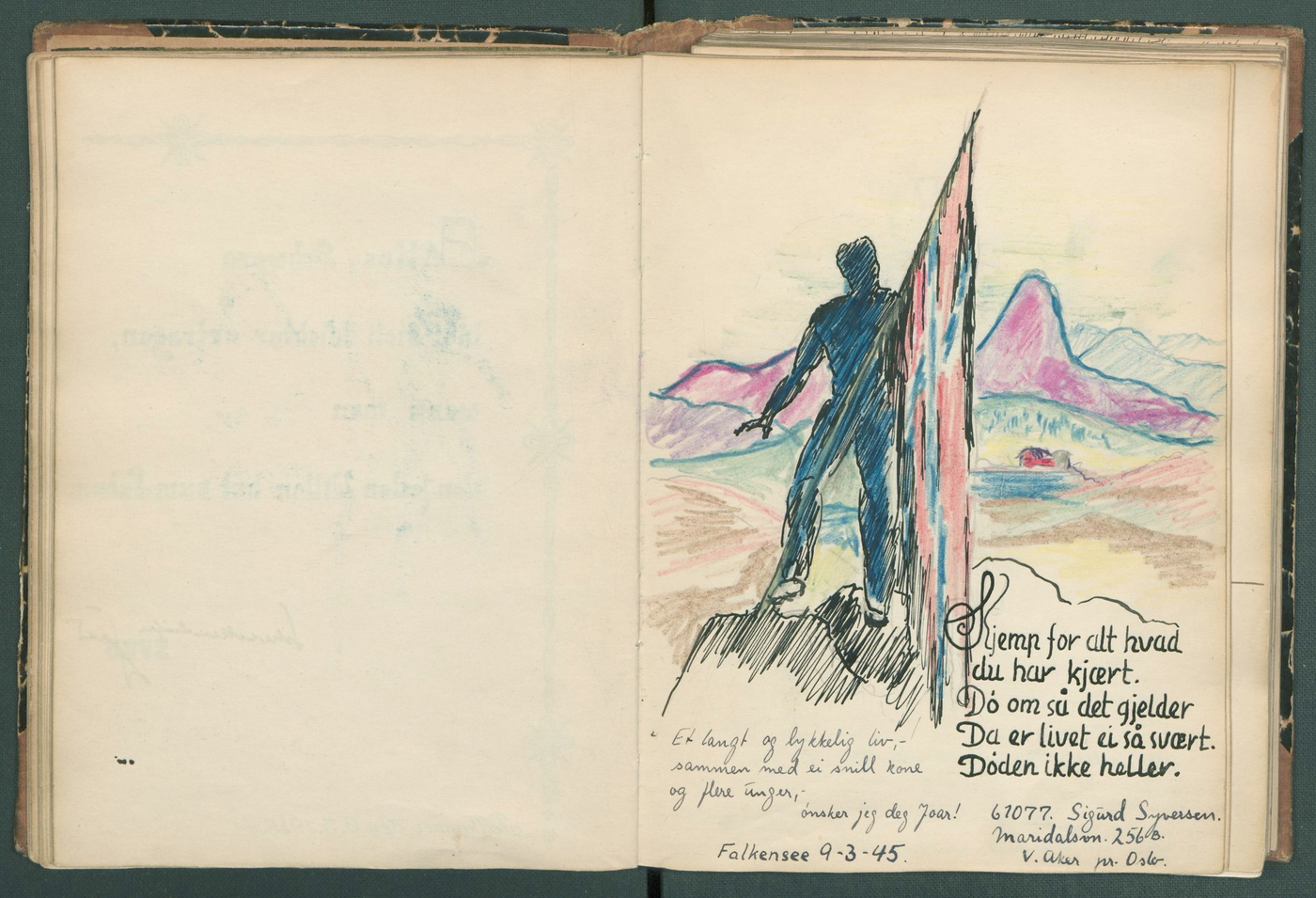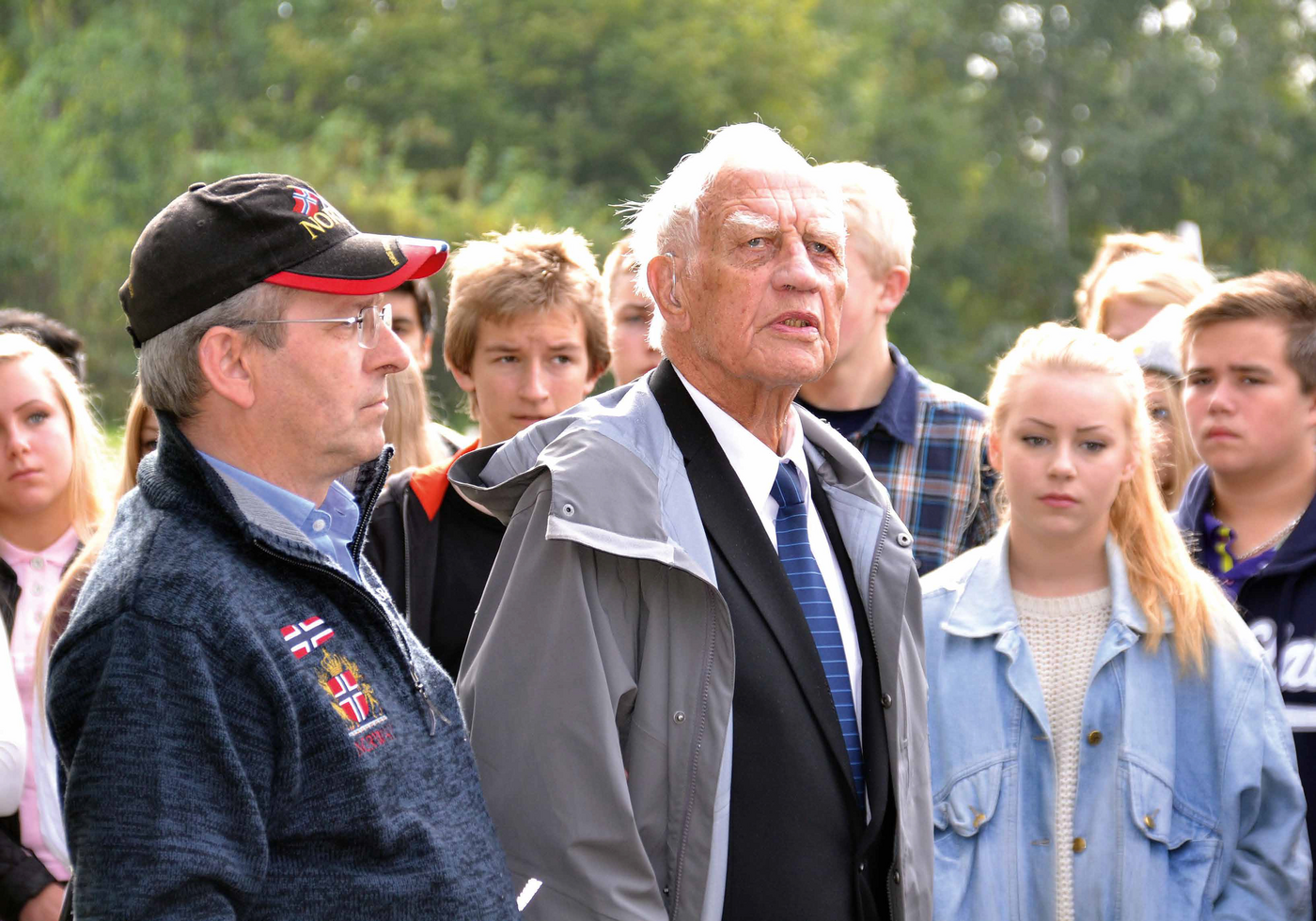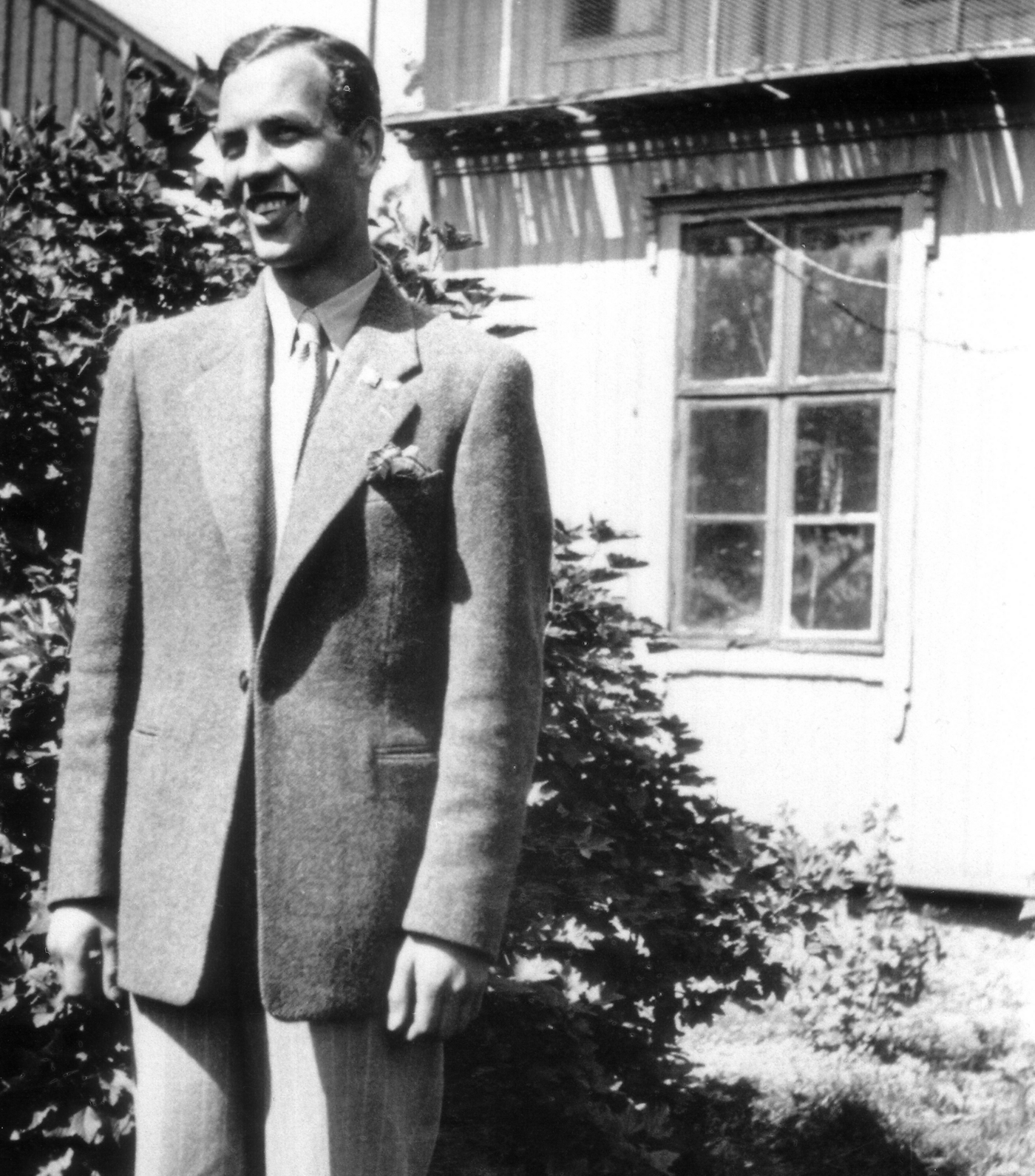Sigurd Syversen was 21 years old when he came to Falkensee for the first time. In June 1943 he arrived at the subcamp together with other Norwegian prisoners. He was arrested in Norway in 1942 and was imprisoned in the Grini concentration camp, in the Sachsenhausen concentration camp and in the Staaken subcamp. In Falkensee, he belonged to the "Demag external detachment" (Deutsche Maschinenbau AG) and worked on a large lathe in tank production. The conditions in the camp were bad. Poor nutrition, constant roll calls and punishment drills severely weakened the prisoners.
When demands arose for an increase in production at Demag, they made it clear that they had no strength to do so. A complaint that was apparently made immediately improved the living conditions of the prisoners. Although they did not increase daily production, they kept it constant.
Sigurd Syversen later summarized his imprisonment in Germany as follows:
"I arrived as a young man by the name of Sigurd Syversen. I came out as prisoner number 61077. All we had was a soup bowl, a coffee cup and a spoon."
At the end of March 1945, the Scandinavian prisoners left the camp on Red Cross buses, the so-called "White Buses". On May 1, 1945, Sigurd Syversen arrived in Malmo.
Writing down his memories and passing them on was one of Sigurd Syversen's life themes. When the city of Falkensee inaugurated the "Historical Park of the Former Falkensee Subcamp" in 1995, he was there and took part in the memorial event with international guests. He organized an exchange between Norwegian and German students, for which he subsequently came to Falkensee again and again. In 2005 he initiated the erection of a commemorative plaque to commemorate the suffering of the Norwegian prisoners, and nine years later the city of Falkensee awarded him the Citizens' Prize. Sigurd Syversen died in Oslo on November 28, 2016.

Source: Arne Svelle

Source: Sachsenhausen Memorial and Museum/SBG

